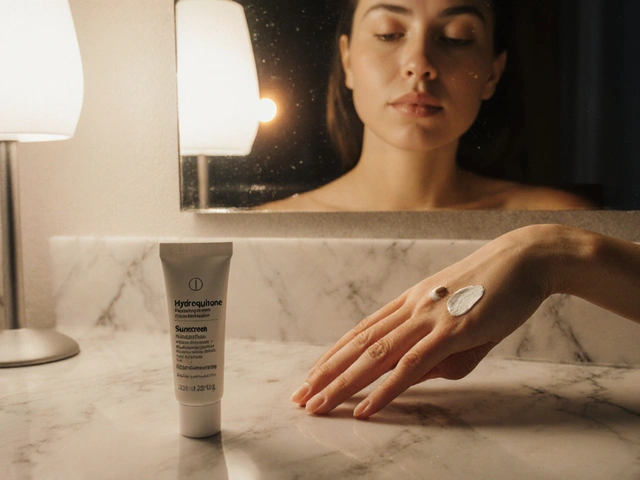How to Read Prescription Label Directions Like BID, TID, and PRN
December 17 2025Porphyria: What It Is and Why It Matters
If you’ve heard the word “porphyria” and felt confused, you’re not alone. It’s a group of rare disorders that mess with how your body makes heme – the part of blood that carries oxygen. When the process breaks down, chemicals pile up and cause a mix of skin, nerve or stomach problems.
Most people think porphyria is only for specialists, but knowing the basics can help you spot early signs and avoid things that make it worse.
Symptoms & Triggers You Should Know
Porphyria shows up in two main ways: acute (affecting nerves) and cutaneous (affecting skin). Acute attacks often bring severe belly pain, nausea, vomiting, rapid heartbeat and confusion. Some folks also get muscle weakness or seizures.
Skin‑type porphyria makes the skin extremely sensitive to sunlight. A few minutes in bright light can cause redness, blisters or itching that lasts for days.
What sets off an attack? Common triggers include:
- Medications such as certain antibiotics, anti‑seizure drugs and hormone therapies.
- Fasting, crash diets or heavy alcohol use – they all shift the chemical balance.
- Hormonal changes, especially in women during their period.
- Stress and infections can also push the body into a flare.
The key is to keep a simple diary of foods, meds and any symptoms. Spotting patterns makes it easier to avoid future triggers.
Treatment & Management Made Simple
There’s no cure, but you can control attacks. For acute episodes doctors often give hemin – a medication that tells the body to stop over‑producing toxic chemicals. Early treatment can cut down hospital stays and prevent complications.
If you’re prone to attacks, a high‑carb diet (think whole grains, fruits) helps because it reduces the need for the faulty pathway. Some patients also benefit from regular glucose infusions during an attack.
When it comes to skin‑type porphyria, the best move is protection. Wear long sleeves, wide‑brim hats and sunscreen that blocks UVA/UVB. Even on cloudy days, UV can sneak through.
Regular check‑ups with a hematologist or a specialist in metabolic disorders keep you on track. They’ll monitor blood tests for porphyrin levels and adjust meds if needed.
Living with porphyria doesn’t have to dominate your life. Knowing the signs, steering clear of triggers, and having an action plan for emergencies lets you stay active and safe.
 5 May
5 May
Porphyria and Sleep: How to Improve Your Sleep Quality
As someone who's struggled with porphyria, I know firsthand how it can affect our sleep quality. In my latest blog post, I explore the connection between porphyria and sleep, and share some useful tips on how to improve sleep quality. I discuss the importance of establishing a regular sleep schedule, creating a calming bedtime routine, and making adjustments to our sleep environment. Additionally, I emphasize the role of proper nutrition and stress management in promoting better sleep. Don't let porphyria rob you of a good night's rest - check out my post for helpful advice!
Read More...




